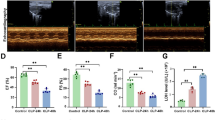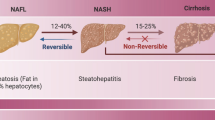Abstract
Aim
CD4+ T cells contribute to disturbances of liver microcirculation after warm ischemia/reperfusion (I/R). The aim of this study was to investigate a possible protective role of FTY720 (Sphingosine-1 phosphate receptor agonist) in this setting.
Material and Methods
In an in vivo model (42 Wistar rats), ischemia of the left liver lobe was induced for 90 min under anesthesia with xylazine/ketanest. Sham-operated untreated ischemic and treatment group with FTY720 (1 mg/kg body weight intravenous) were investigated. The effect of FTY on I/R injury was assessed by in vivo microscopy 30–90 min after reperfusion (perfusion rate, vessel diameter, leukocyte–endothelial cell interactions, T cell infiltration), by measurement of serum aspartate aminotransferase (AST), alanine aminotransferase (ALT), reverse transcription–polymerase chain reaction (RT–PCR) of interleukin (IL)-2, IL-6, IL-10, TNF-α, toll-like receptor 4 (TLR-4), and by histological investigation.
Results
After 30 min of reperfusion, the number of T cells in sinusoids was increased four-fold. In the FTY group, the number of T cells was reduced to an half of the number of the ischemia group. Likewise, the number of adherent leukocytes in sinusoids (150.8 ± 10.9% of s.o.) was reduced in the treatment group (117.3 ± 12.2%; p < 0.05 vs ischemia), leading to an improvement in perfusion rate in this group (85.0 ± 4.6% of sham group) compared to nontreated animals (57.5 ± 10.8%; p < 0.05). According to improved microcirculation, AST/ALT values and histological tissue damage were reduced in the therapy group. RT–PCR revealed an increased expression of IL-2, IL-6, and TLR-4 in the nontreated ischemic group. This expression was clearly reduced in the treatment group.
Conclusion
In conclusion, FTY720 ameliorates the microcirculatory, biochemical, and histological manifestations of hepatic I/R injury by preventing T cell infiltration. These results indicate that T cells are pivotal mediators in hepatic I/R and may have important implications early after liver transplantation and in warm ischemia.







Similar content being viewed by others
References
Kupiec-Weglinski JW, Busuttil RW. Ischemia and reperfusion injury in liver transplantation. Transplant Proc 2005;37:1653–1656.
Kim YI. Ischemia–reperfusion injury of the human liver during hepatic resection. J Hepatobiliary Pancreat Surg 2003;10:195–199.
Arii S, Teramoto K, Kawamura T. Current progress in the understanding of and therapeutic strategies for ischemia and reperfusion injury of the liver. J Hepatobiliary Pancreat Surg 2003;10:189–194.
Vardanian AJ, Busuttil RW, Kupiec-Weglinski JW. Molecular mediators of liver ischemia and reperfusion injury: a brief review. Mol Med 2008;14:337–345.
Chiba K, Yanagawa Y, Masubuchi Y, Kataoka H, Kawaguchi T, Ohtsuki M, Hoshino Y. FTY720, a novel immunosuppressant, induces sequestration of circulating mature lymphocytes by acceleration of lymphocyte homing in rats. I. FTY720 selectively decreases the number of circulating mature lymphocytes by acceleration of lymphocyte homing. J Immunol 1998;160:5037–5044.
Dragun D, Bohler T, Nieminen-Kelha M, Waiser J, Schneider W, Haller H, Luft FC, Budde K, Neumayer HH. FTY720-induced lymphocyte homing modulates post-transplant preservation/reperfusion injury. Kidney Int 2004;65:1076–1083.
Anselmo DM, Amersi FF, Shen XD, Gao F, Katori M, Lassman C, Ke B, Coito AJ, Ma J, Brinkmann V, Busuttil RW, Kupiec-Weglinski JW, Farmer DG. FTY720 pretreatment reduces warm hepatic ischemia reperfusion injury through inhibition of T-lymphocyte infiltration. Am J Transplant 2002;2:843–849.
Luo ZJ, Tanaka T, Kimura F, Miyasaka M. Analysis of the mode of action of a novel immunosuppressant FTY720 in mice. Immunopharmacology 1999;41:199–207.
Khandoga A, Hanschen M, Kessler JS, Krombach F. CD4+ T cells contribute to postischemic liver injury in mice by interacting with sinusoidal endothelium and platelets. Hepatology 2006;43:306–315.
Partington KM, Jenkinson EJ, Anderson G. A novel method of cell separation based on dual parameter immunomagnetic cell selection. J Immunol Methods 1999;223:195–205.
Uhlmann S, Uhlmann D, Spiegel HU. Evaluation of hepatic microcirculation by in vivo microscopy. J Invest Surg 1999;12:179–193.
Uhlmann D, Armann B, Gaebel G, Ludwig S, Hess J, Pietsch UC, Escher E, Fiedler M, Tannapfel A, Hauss J, Witzigmann H. Endothelin A receptor blockade reduces hepatic ischemia/reperfusion injury after warm ischemia in a pig model. J Gastrointest Surg 2003;7:331–339.
Malhi H, Gores GJ. Cellular and molecular mechanisms of liver injury. Gastroenterology 2008;134:1641–1654.
Uhlmann D, Witzigmann H, Senninger N, Hauss J, Spiegel HU. Protective role of an endothelin-converting enzyme inhibitor (FR901533) in hepatic ischemia/reperfusion injury. Microvasc Res 2001;62:43–54.
Linfert D, Chowdhry T, Rabb H. Lymphocytes and ischemia–reperfusion injury. Transplant Rev (Orlando) 2009;23:1–10.
Matsuda T, Yamaguchi Y, Matsumura F, Akizuki E, Okabe K, Liang J, Ohshiro H, Ichiguchi O, Yamada S, Mori K, Ogawa M. Immunosuppressants decrease neutrophil chemoattractant and attenuate ischemia/reperfusion injury of the liver in rats. J Trauma 1998;44:475–484.
Burne MJ, Daniels F, El GA, Mauiyyedi S, Colvin RB, O’Donnell MP, Rabb H. Identification of the CD4(+) T cell as a major pathogenic factor in ischemic acute renal failure. J Clin Invest 2001;108:1283–1290.
Clavien PA, Harvey PR, Sanabria JR, Cywes R, Levy GA, Strasberg SM. Lymphocyte adherence in the reperfused rat liver: mechanisms and effects. Hepatology 1993;17:131–142.
Man K, Lo CM, Lee TK, Li XL, Ng IO, Fan ST. Intragraft gene expression profiles by cDNA microarray in small-for-size liver grafts. Liver Transpl 2003;9:425–432.
Yoshidome H, Kato A, Edwards MJ, Lentsch AB. Interleukin-10 suppresses hepatic ischemia/reperfusion injury in mice: implications of a central role for nuclear factor kappa B. Hepatology 1999;30:203–208.
Lee MJ, Thangada S, Claffey KP, Ancellin N, Liu CH, Kluk M, Volpi M, Sha’afi RI, Hla T. Vascular endothelial cell adherens junction assembly and morphogenesis induced by sphingosine-1-phosphate. Cell 1999;99:301–312.
Zwacka RM, Zhang Y, Halldorson J, Schlossberg H, Dudus L, Engelhardt JF. CD4(+) T-lymphocytes mediate ischemia/reperfusion-induced inflammatory responses in mouse liver. J Clin Invest 1997;100:279–289.
Kawano K, Bowers JL, Kim YI, Tatsuma T, Kitano S, Kobayashi M, Clouse ME. FK506 reduces oxidative hepatic injury following cold ischemic preservation and transplantation. Transplant Proc 1996;28:1902–1903.
Okuaki Y, Miyazaki H, Zeniya M, Ishikawa T, Ohkawa Y, Tsuno S, Sakaguchi M, Hara M, Takahashi H, Toda G. Splenectomy-reduced hepatic injury induced by ischemia/reperfusion in the rat. Liver 1996;16:188–194.
Huang Y, Rabb H, Womer KL. Ischemia–reperfusion and immediate T cell responses. Cell Immunol 2007;248:4–11.
Takeda K, Akira S. Toll-like receptors. Curr Protoc Immunol 2007;Chapter 14:Unit
Beg AA. Endogenous ligands of Toll-like receptors: implications for regulating inflammatory and immune responses. Trends Immunol 2002;23:509–512.
Zhai Y, Shen XD, O’Connell R, Gao F, Lassman C, Busuttil RW, Cheng G, Kupiec-Weglinski JW. Cutting edge: TLR4 activation mediates liver ischemia/reperfusion inflammatory response via IFN regulatory factor 3-dependent MyD88-independent pathway. J Immunol 2004;173:7115–7119.
Katsargyris A, Klonaris C, Alexandrou A, Giakoustidis AE, Vasileiou I, Theocharis S. Toll like receptors in liver ischemia reperfusion injury: a novel target for therapeutic modulation? Expert Opin Ther Targets 2009;13:427–442.
Seki E, Brenner DA. Toll-like receptors and adaptor molecules in liver disease: update. Hepatology 2008;48:322–335.
Wu R, Cui X, Dong W, Zhou M, Simms HH, Wang P. Suppression of hepatocyte CYP1A2 expression by Kupffer cells via AhR pathway: the central role of proinflammatory cytokines. Int J Mol Med 2006;18:339–346.
Ma W, Wang ZR, Shi L, Yuan Y. Expression of macrophage inflammatory protein-1alpha in Kupffer cells following liver ischemia or reperfusion injury in rats. World J Gastroenterol 2006;12:3854–3858.
Farrell GC, Teoh NC, McCuskey RS. Hepatic microcirculation in fatty liver disease. Anat Rec (Hoboken) 2008;291:684–692.
Montalvo-Jave EE, Escalante-Tattersfield T, Ortega-Salgado JA, Pina E, Geller DA. Factors in the pathophysiology of the liver ischemia-reperfusion injury. J Surg Res 2008;147:153–159.
De MS, Brenner DA. NOX in liver fibrosis. Arch Biochem Biophys 2007;462:266–272.
Man K, Ng KT, Lee TK, Lo CM, Sun CK, Li XL, Zhao Y, Ho JW, Fan ST. FTY720 attenuates hepatic ischemia-reperfusion injury in normal and cirrhotic livers. Am J Transplant 2005;5:40–49.
Flach R, Speidel N, Flohe S, Borgermann J, Dresen IG, Erhard J, Schade FU. Analysis of intragraft cytokine expression during early reperfusion after liver transplantation using semi-quantitative RT–PCR. Cytokine 1998;10:445–451.
Que X, Debonera F, Xie J, Furth EE, Aldeguer X, Gelman AE, Olthoff KM. Pattern of ischemia reperfusion injury in a mouse orthotopic liver transplant model. J Surg Res 2004;116:262–268.
Blindenbacher A, Wang X, Langer I, Savino R, Terracciano L, Heim MH. Interleukin 6 is important for survival after partial hepatectomy in mice. Hepatology 2003;38:674–682.
Author information
Authors and Affiliations
Corresponding author
Additional information
This study was supported by a grant from the Novartis Pharma GmbH.
Rights and permissions
About this article
Cite this article
Martin, M., Mory, C., Prescher, A. et al. Protective Effects of Early CD4+ T Cell Reduction in Hepatic Ischemia/Reperfusion Injury. J Gastrointest Surg 14, 511–519 (2010). https://doi.org/10.1007/s11605-009-1104-3
Received:
Accepted:
Published:
Issue Date:
DOI: https://doi.org/10.1007/s11605-009-1104-3




